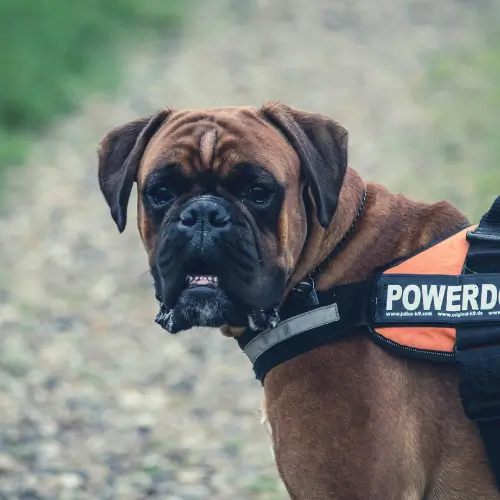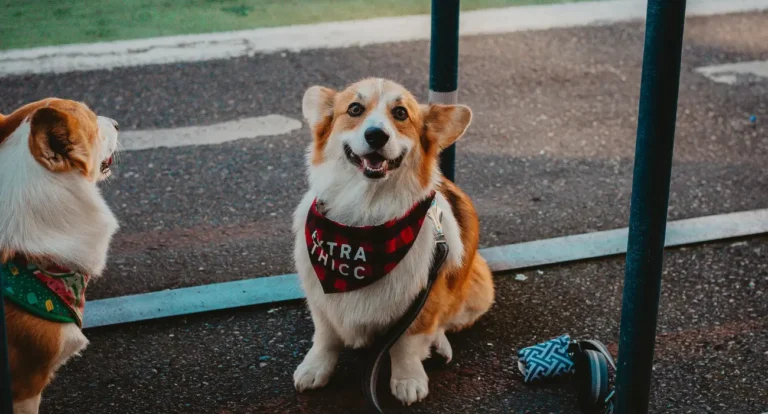How to Successfully Train a Service Dog: 6-Step Guide
How to Successfully Train a Service Dog : 6 Steps To Teaching Important Skills is a wonderful experience, one that enhances your unique bond with your dog and provides great assistance to your life. Whether you are exploring how to train a dog to help with mobility, medical conditions, or mental/emotional support services, it is very gratifying. If you want to know how to train a service dog, you’re in the right place. We will take you through the entire process, from prepping to developing advanced skills in service dog training. Let’s get started!
Table of Contents
Introduction
Now, think about having a dog beside you, where by they not only offer companionship but physically helps you in your day to day life – that’s a service dog. Your quality of life can improve by improving your independence and allowing for continued independence by completing tasks to support your physical and/or emotional wellness.
Training a service dog, goes beyond just training obedience and commands. You will create a comrade, a reliable working dog to support you. Most would be hesitant in retraining their family dog. It can be frightening and overwhelming, but with patience, consistency, and love, your dog can be a functional and valuable member of your team. This guide will help you through each key area; it should help you focus on the needs of your furry friend and abandon old habits.

1. Training a Service Dog Successfully: Service Dog Overview
What is a Service Dog?
A service dog is a specially trained dog that performs specific tasks to help individuals with disabilities. Tasks can assist with physical disabilities, medical disabilities, or for emotional support. Service dogs are different from a pet dog because they perform a type of task to alleviate the impact of a person’s disability. Service dogs are an important factor in a person’s life as a routine part of everyday life.
Why are Service Dogs important?
Service dogs can help with different issues including but not limited to: Medical Alerting: Service dogs can be trained to recognize signs of medical disabilities including seizures, diabetic reactions, anxiety attacks, etc., to alert to the individual with the disability. Mobility: If someone has limited mobility, they can assist you with: walking, retrieving an object, or opening a door. Emotional Support: Service dogs can be used for individuals with psychological disabilities, for example, PTSD, as a support animal and can assist in grounding an individual with a mental disability when experiencing symptoms. Service dogs can enhance your independence while allowing you to interact positively through out and through the world.
2. Getting Your Dog Ready for Service Dog TrainingChoosing the Right DogNot all dogs are suited to be service dogs.
Selecting a dog with an appropriate temperament and energy level is very important. A service dog should be calm and focused and want to work. Here are some things you can look for in a prospective service dog: Temperament: Your dog should be friendly, not aggressive, and not overly anxious. Dogs that are willing to please and social usually are successful in training.
Health: A service dog needs to be healthy dog.
When selecting a dog, think about their age, stamina, and general health.
Energy Level: A service dog needs to maintain calmness in public and be able to perform tasks reliably and readily upon command.
Even if the dog is energetic it should still have a reasonable ability to focus, and follow directions. Basic Obedience Skills Before you start specific service dog tasks, your dog should reliably understand the basic commands of obedience. These are:Sit Stay Come Down Heel These commands help establish the foundation for advance training, and ensure that your dog will listen to basic commands in distracting environments. Health and Fitness Evaluation
Ensure that your dog is physically fit to handle the training. Consult with your veterinarian to confirm that your dog is in good health and capable of performing service tasks without strain.
3. Important Skills for Training Your Service Dog
Now that your dog is prepared for training, let’s go over the necessary skills you will want to teach. Service dog training generally covers these skills Task Training The key purpose of a service dog is to help you with tasks specifically to help you mitigate your disability.
Here is how to train your dog to do some of the regular tasks service dogs do: Fetching Items: Teach the dog to bring back items such as your keys, phone, or medication. Show the object and use a command such as “fetch”. Reward them when the dog returns with the item. Next, start adding some distance to increase difficulty Opening Doors for those with mobility limitations empowering your dog to open locked or unlocked doors for you will change the whole experience.
If you want to teach your dog to open doors, attach a leash to the door handle. Use positive reinforcement to encourage your service dog to pull the door handle down. This has to be practiced in various environmental settings to maintain the behavior.
Bracing and Support: For mobility assistance, you’ll need to train your dog to Physical Support such as bracing when you are standing or helping you to walk. Start rewarding your dog when they stand still at your side. Have the dog stay steady while you lean on them.
Public Access Training. A service dog needs to be appropriately behaved in public places regardless of distractions. This training will help you dog to handle a variety of different environments including crowds, public transportation and stores. The focus on the following should be
Heel: Teaching your dog to walk calmly beside you. Sit and Stay in Public: Your dog needs to be able to sit or lay down quietly in public. Ignoring Distractions: Training your dog to ignore people, other dogs, and noise.
4. Refined Training Techniques for Service Dog sIncreasing
Task Complexity Once you have taught your dog the basic commands and behaviors, you can begin teaching your dog tasks with greater complexity.
For example: Combine multiple tasks: We teach your dog to do two or more tasks in a row.Use signals or cues: Teach your dog to respond to specific commands or signals (like hand gestures) that correspond with tasks.
Service Dog Alert Training With medical alert dogs, training involves teaching your dog to recognize the signs of a medical event (like a seizure or low blood sugar) and alert you or others.
Alert training usually consists of: Recognizing symptoms Start by teaching your dog to recognize symptoms that indicate a change in your behavior (like slurred speech), your body language (like stiff posture), or your scent (body odor).
Notice something indicating an alert: Follow this process by teaching your dog to act in response to the original symptoms – barking, nudging you, or another predetermined behavior.Using positive reinforcementUsing positive reinforcement is always best practice if you are going to be rewarding your dog for good behavior. There are a few options that you can reinforce the good behavior with:TreatsPraisePlayWhen you reinforce your dog for successful task completion, you not only build your dog’s desire to work, but you also reinforce the training to perform tasks.
5. Common Challenges Faced In Training a Service DogBehavior IssuesEven the best-behaved dog is going to face problems during training.
Some issues can include: Distractions: dogs are prone to getting distracted by other animals, the sounds or sights of other people, and/or other types of stimuli. To alleviate distractions, practice in an environment with controlled distractions and gradually increase the difficulty/restrictions.
Separation Anxiety: Service dogs may develop anxiety as a result of being separated from their handler. To ease into it, practice short separation first, and gradually work your way up to a longer period of separation.Physical LimitationsYour dog’s ability to assist all the tasks you would like him or her to may or may not be limited by their physical health.
For this reason, it is very important to routinely evaluate your dog’s health and adjust training accordingly. If a dog’s physical limitations are exceeded, it can contribute to fatigue or injury. So always be sure training sessions are reasonable in length for your dog.
6. Legal Requirements and Certifications for Service DogsUnderstanding ADA RightsTitle III of the Americans with Disabilities Act (ADA) allows service dogs certain rights.
These rights include the following: Access to Public Places: Service dogs may accompany their handlers in restaurants, stores, transportation, etc.
No Pet Fees: Service dogs cannot be charged pet fees, nor can the handler be asked to provide proof of their disability.CertificationAlthough the ADA does not require service dogs to have a certification, there are programs that provide voluntary training and certification. Although it is not required by law, certification may serve as an extra level of assurance for places that request proof of service dog status.
Conclusion
Teaching a service dog takes time, patience and love, but there are so many rewards to having a service dog. With proper awareness, planning and training, your dog can become a reliable aide to help you traverse life. Remember, consistency and positive reinforcement are your best friends. This guide will help you develop a long-term working relationship with your service dog, increasing your independence and quality of life.
FAQs
1. How long does it take to train a service dog?
Training a service dog can take anywhere from six months to two years, depending on the dog’s temperament, the complexity of tasks, and the consistency of training.
2. Can any dog become a service dog?
Not every dog has the temperament or skills to become a service dog. It’s important to assess your dog’s health, temperament, and energy levels before beginning training.
3. What tasks can a service dog perform?
Service dogs can perform a wide range of tasks, including retrieving items, opening doors, guiding individuals with visual impairments, and alerting to medical conditions.
4. Is professional training required?
While you can train a service dog on your own, many people choose to hire professional trainers, especially for more complex tasks.
Training a service dog isn’t a quick process, but it’s incredibly fulfilling. If you’re ready to start your journey, take the first step today by preparing your dog for training and choosing the right tasks. With dedication, your dog can become a loyal, skilled companion who helps you live life with more independence and confidence.







